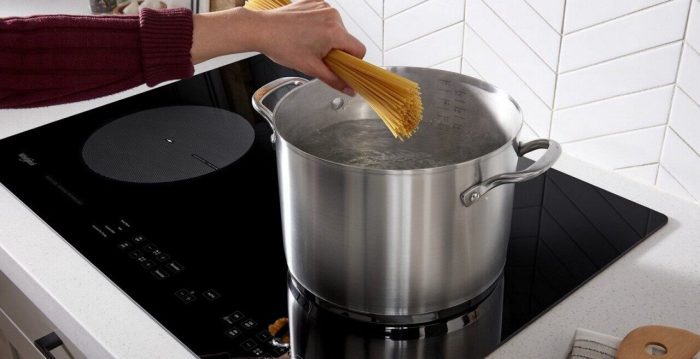Regardless of whether you have recently moved into a new apartment with a new stove or simply want to know what type some other stove is, worry not. In this article, you will get the most detailed explanation regarding this topic so that the next time you ask yourself how do I know if my stove is induction, you will have the knowledge and figure that out in no time.

How Do I Know If My Stove Is Induction?
With the global energy crisis that has struck the entire world, people are trying to find new ways to save some energy wherever possible. One of those ways to save energy is to switch to an induction stove. But, as induction stoves resemble regular stoves, it is no wonder that you might be asking, how do I know if my stove is induction?
Therefore, as this question bothers many people around the globe, the best way to end this confusion is to write this article and provide you with a detailed explanation regarding this topic.
Continue reading to discover the four best and most efficient ways to tell whether your stove is induction or not.
Ways to tell whether your stove is induction or not
So how do I know if my stove is induction? To know this, you will need to put your oven through these four tests that will accurately give you the answer.
Try magnetic pans
The first and most efficient way to see whether your stove is induction is to try using magnetic pans or other magnetic cookware. To do this, you will simply need to turn the stove on, place the magnetic pan on the stove top, put some water in the pan, and wait for a few minutes.
If, after some time, you notice that the water in the pan starts heating and that there is steam coming out, congratulations, your stove is indeed an induction stove.
Notice the light
Another way you can tell that your stove is induction is by the light on the stovetop or the lack of it. Namely, as you probably already know, when you turn on a regular electric cooktop, there is an orangey-red light or glow, which indicates that a particular ‘hot zone’ is turned on. Therefore, if you turn on your stove and there is no light on the circles, the stove is induction.
The reason behind this is that the electric stovetop works by heating the surface, whereas the induction stove works by heating the pan or the pot itself.
Try heating water in regular pots
If you can not find magnetic cookware, worry not. You can perform the test with regular pots. The procedure is the same as with the magnetic pots. Take a regular non-magnetic pot and fill it with cold water. Then, turn the stove on and place the pot on the circle you have turned on.
If, after some time, about ten to twenty minutes, there are no changes, no steam coming out of the pot, and the water still seems cold, your stove is induction. This is because, as mentioned earlier, the induction stove can only work with magnetic pots.
Using a kitchen magnet
If you are looking for the most straightforward way to tell whether your stove is induction, then use a kitchen magnet. To do this, you must take a kitchen magnet and try placing it onto the stovetop. If it sticks and if you feel the magnetization, it means that the stove is induction.
Knobs
Finally, the last way you can tell if your stove is induction is by checking whether there are knobs to control the burners. As a digital touch display controls the burner heat in induction stoves, your induction oven should not have knobs. If it does, it probably is a gas stove or a regular old-school electric stove.
How Does Induction Stove Differ From a Regular One?
After reading the explanation of how to know if your stove is induction, it is always wise to know how the induction stovetop differs from an electric or gas burner.
The way it functions
First, the most significant difference between this and the rest of the stoves and stovetops is how it functions. Namely, the induction stove or burner uses electromagnetism to generate heat. This stove does that with the help of the coil of metal (usually copper) placed inside the cooktop. When the power is turned on, this metal coil creates a magnetic field.
Then, when you put the magnetic cookware on top of the burner, more specifically, on the magnetic field, it generates an electrical current resulting in the cooking vessel heating up.
Read More: “What Does Induction Safe Mean?“
Magnetic cookware
The second way that the induction stove is different from the regular electric or gas stove is because of the particular type of cookware required. As you probably already know, the induction stove only works with unique magnetic cookware. This cookware is almost always made out of ferrous metal, which means that the metal must have magnetic properties. The most common types of ferrous metal used in magnetic cookware are enameled cast iron, steel, and cast iron.

What can happen if you put non-magnetic cookware on stove induction?
Finally, as another significant ambiguity regarding this topic is what can happen if you put non-magnetic cookware on stove induction, I’d like to give you a little insight on that as well.
As you could have read so far, the induction stove can not work unless there is magnetic cookware on top of it to create a magnetic field. So, if you turn on the burner and place a non-magnetic pot or pan, absolutely nothing will happen. As no heat is produced, the pan will stay cold, and there will be zero reaction and interaction.
